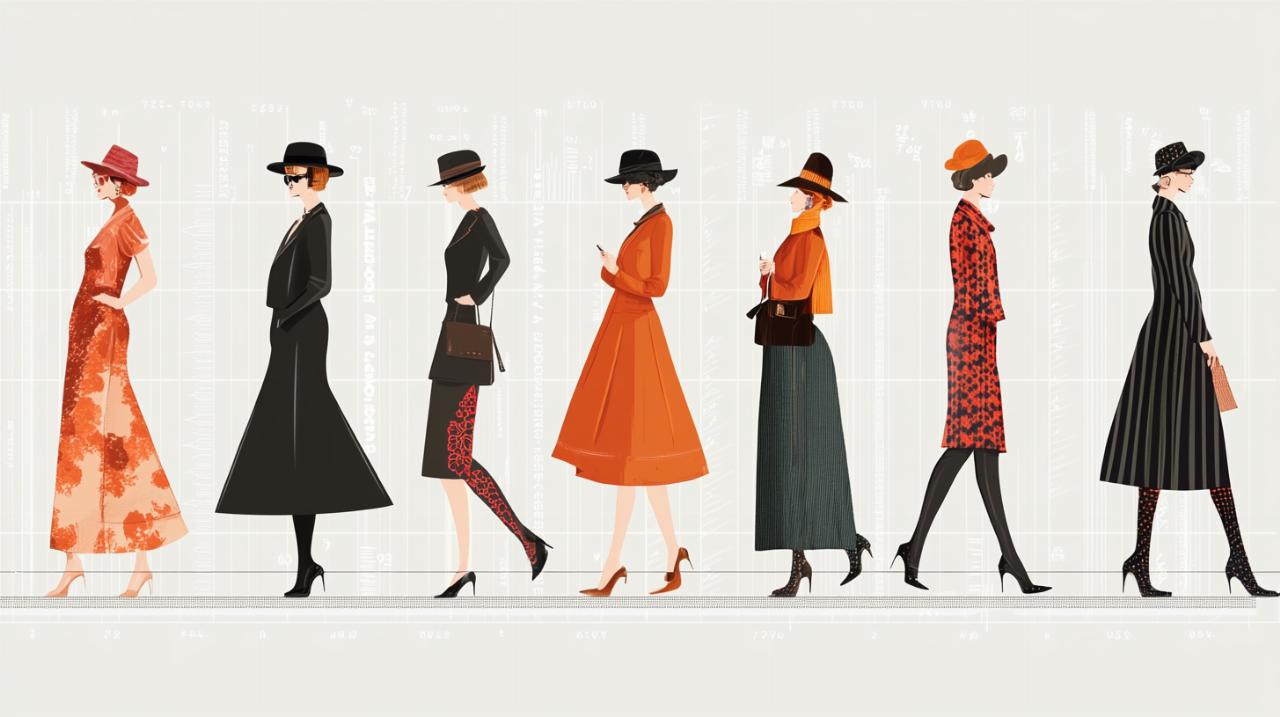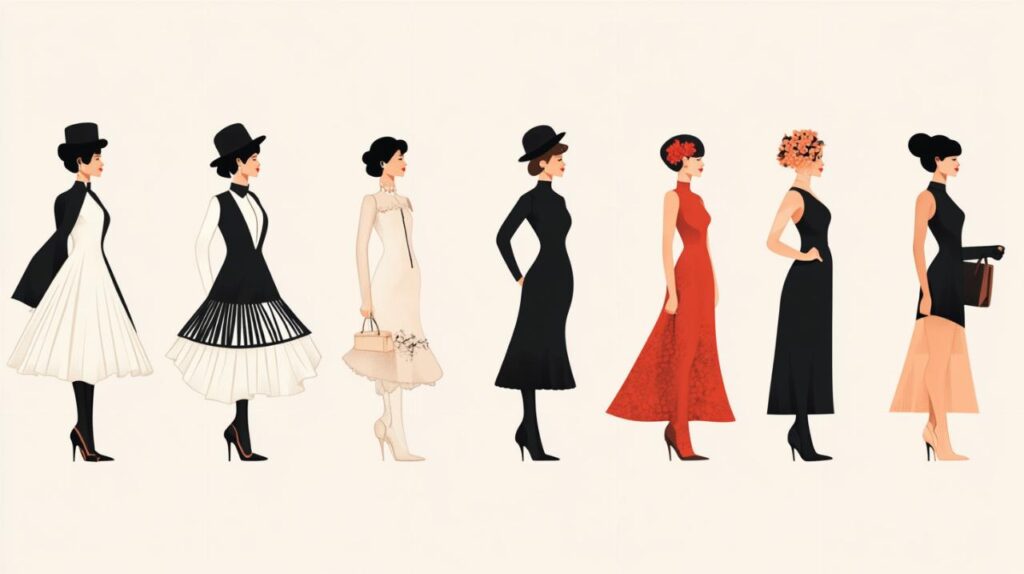Fashion has always served as a mirror reflecting the ever-shifting values, aspirations and tumultuous changes of society at large. From the decadence of baroque fabrics to the minimalist whispers of modern athleisure, each era leaves behind a sartorial signature that tells its own vivid story. To understand where fashion is heading, it is essential to look back at the threads of history woven through decades of cultural upheaval, technological leaps and artistic innovation. The journey through fashion history is not merely a catalogue of garments, but a captivating narrative that intertwines with our collective identity and the spirit of the times.
The Roaring Twenties to Post-War Elegance: A Century of Style
Flapper Dresses and the Jazz Age Revolution
The nineteen twenties marked a dramatic departure from the rigid corsetry and modest hemlines of previous decades, ushering in an era of liberation and exuberance. The flapper style, often referred to as la garçonne, embodied a new sense of freedom for women who embraced short skirts, drop-waist dresses and a decidedly boyish silhouette. This revolution in dress was not merely about aesthetics; it reflected profound shifts in gender roles, as women secured the right to vote and stepped into public life with unprecedented confidence. The Jazz Age was synonymous with vibrant nightlife, swinging music and a palpable desire to break away from the sombreness of wartime constraints. best fashion trends for 2021 may have revived elements of this carefree spirit, yet the twenties remain the definitive blueprint for bold, joyous expression in clothing. Fashion designers of that period celebrated the female form in new ways, introducing bias cuts and innovative fabrics that allowed for movement and dance. The influence of Hollywood glamour also began to permeate everyday fashion, as silver screen icons set trends that trickled down to high streets across the globe. Sportswear began its ascent during this time, as tennis and golf became fashionable pastimes, prompting designers to create garments that balanced elegance with practicality. The Robe de style, an alternative to the flapper silhouette, offered a romantic counterpoint with its full skirts and fitted bodices, proving that even within a single decade, diversity in fashion history flourished.
Wartime Utility and the Birth of Modern Fashion
The glamour of the twenties gave way to the harsh realities of the Great Depression and the outbreak of World War II, which brought about a seismic shift in fashion priorities. During the nineteen thirties, the feminine silhouette regained prominence, with bias cuts creating flowing, elegant lines that harked back to classical beauty. However, the nineteen forties introduced a starkly different aesthetic driven by necessity rather than frivolity. Utility clothing became the norm as fabric rationing imposed strict limits on materials, leading to simpler, more functional designs. Women took on roles in factories and services, requiring practical garments that could withstand the rigours of wartime labour. Military-inspired styles, complete with structured shoulders and narrow skirts, dominated wardrobes, reflecting both solidarity and resilience. Yet, even amidst austerity, creativity found a way to shine. The invention of the bikini in the mid-forties, a daring two-piece swimsuit, challenged conventions and signalled a shift towards more liberated attitudes once peace returned. Christian Dior’s revolutionary New Look, unveiled in the late nineteen forties, epitomised the desire to leave behind the gloom of war and embrace opulence once more. With its cinched waists, voluminous skirts and lavish use of fabric, this collection marked the birth of modern fashion as we know it, setting the stage for the elegance and femininity that would define the nineteen fifties. The New Look was not just a collection; it was a declaration that beauty, optimism and luxury could reclaim their place in a world recovering from devastation.
Cultural Shifts and Technological Innovation in Contemporary Fashion

How society and politics shape what we wear
Fashion has never existed in a vacuum; it is inextricably linked to the cultural and political currents that define each generation. The nineteen sixties brought forth a youthful rebellion that shattered conservative norms, with the miniskirt becoming a symbol of liberation and modernity. Figures such as Mary Quant championed this bold new silhouette, which reflected the spirit of the Swinging Sixties and the broader counterculture movement. The nineteen seventies continued this trend of individuality, as hippie style, prairie dresses and the glamour of disco coexisted in a vibrant tapestry of self-expression. The wrapdress, popularised during this decade, offered women both comfort and sophistication, embodying the era’s feminist ideals. As the nineteen eighties dawned, fashion took on a more extravagant and assertive tone, with power dressing becoming the hallmark of a generation eager to assert its presence in boardrooms and on dance floors alike. Shoulder pads, bold colours and oversized silhouettes dominated, influenced by the pop, punk and hip hop movements that defined the decade’s eclectic soundtrack. Meanwhile, Japanese deconstruction challenged Western conventions, introducing asymmetry and avant-garde design that questioned the very nature of garment construction. The nineteen nineties saw the rise of supermodels and the democratisation of fashion through sportswear, minimalism and grunge, each reflecting different facets of a rapidly globalising world. The turn of the millennium brought fast fashion into sharp focus, as celebrity influence and social media began to reshape how trends were created and consumed. The twenty-tens witnessed the explosive growth of fashion influencers and the return of maximalism, yet also marked a turning point towards sustainability and ethical production. The twenty-twenties, shaped by the global pandemic, have embraced cozy activewear and minimalist aesthetics, while simultaneously reviving nostalgic trends from the sixties and the Y2K era. This cyclical nature of fashion evolution underscores how deeply intertwined our clothing choices are with the world around us.
Smart Fabrics and Digital Design: The Future of Clothing
Technological innovation has become a driving force in contemporary fashion, transforming not only how garments are designed and produced but also how they function in our daily lives. Smart fabrics, embedded with sensors and responsive materials, are redefining the boundaries between clothing and technology. These textiles can monitor health metrics, adjust to temperature changes and even harness energy, blurring the lines between fashion and wearable tech. Digital design tools have revolutionised the creative process, allowing designers to experiment with pattern making, digitising and resizing garments with unprecedented precision and efficiency. Virtual fashion shows and online consultations have become the norm, accelerating the pace at which trends emerge and evolve. The rise of social media has empowered individual style, enabling anyone with a smartphone to become a tastemaker and influence the global fashion conversation. This democratisation of fashion has also amplified calls for sustainability, as consumers increasingly demand transparency and ethical production from brands. Vintage fashion and the revival of past trends reflect a growing awareness of the environmental impact of fast fashion, prompting a return to quality, longevity and craftsmanship. Fashion education and career mentoring have adapted to these changes, with courses and podcasts offering insights into the skills needed for a future where innovation and responsibility go hand in hand. The future of clothing is not just about aesthetics; it is about balancing style with environmental stewardship and social accountability. As we continue to explore the evolution of fashion trends over the years, it becomes clear that the journey is far from over. Each decade adds a new chapter to this rich narrative, shaped by the creativity of designers like Coco Chanel and Christian Dior, the cultural movements that inspire us and the technological advances that push the boundaries of what fashion can be. Ultimately, fashion remains a powerful form of self-expression and a reflection of who we are, where we have been and where we are headed in this ever-changing world.


